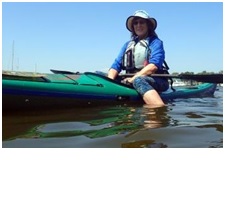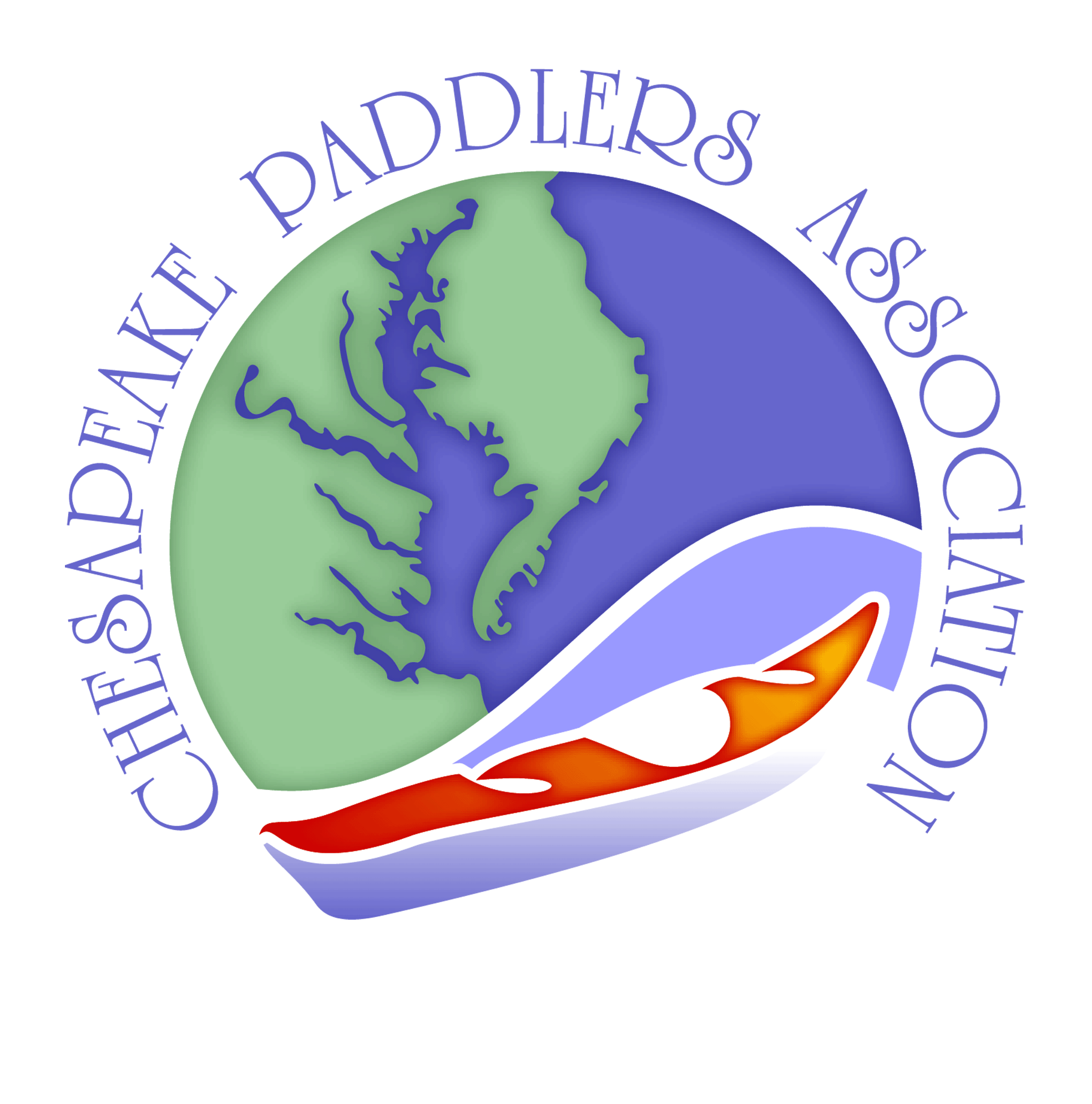by Paula Hubbard
There is some debate in the kayak community regarding skegs or rudders. What are they, how are they used and which is better? Of course, the answer is, “It Depends”. Skegs and rudders are both used to help control and maneuver the kayak, especially in windy conditions. Most kayaks have a tendency to turn into the wind, called weather cocking. The skeg and rudder systems can correct this making the boat track in a straight line.
Weather Cocking, What is It? Weather cocking occurs when the kayak is moving through the water creating pressure on the bow. The displacement of the water reduces the pressure on the stern allowing it to be pushed by the wind. The net result is that the boat tends to turn into the wind. This is fine as long as you are paddling directly into the wind, but when there is a cross wind or you are paddling down wind, the kayak becomes more difficult to control. Rather than using multiple correction strokes, it is simple to deploy the skeg or rudder to help keep the boat tracking in a straight line. Both skegs and rudders work by creating pressure at the stern of the kayak preventing it from being moved by the wind. You can adjust this by deploying part of the skeg, just enough to create the desired result or by adjusting the angle of the rudder.
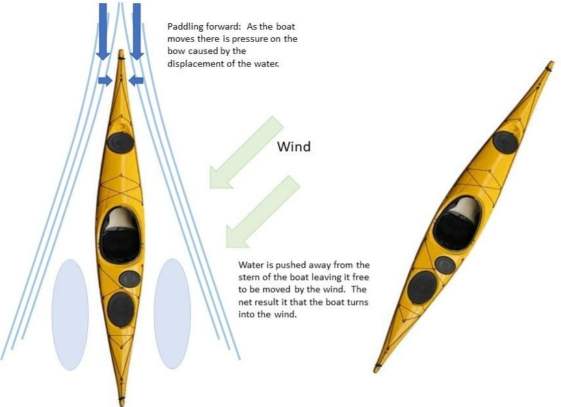
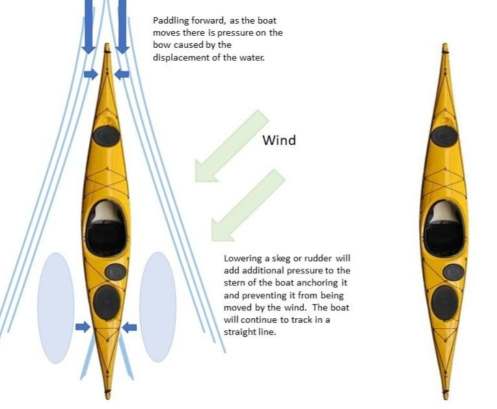
Rudder vs. Skeg Rudders can be mounted on the stern and deployed using cables. These are most commonly seen on touring boats. The rudder can be deployed when needed or pulled up onto the back deck for launching and landing. This type of rudder is controlled by using the foot pegs.
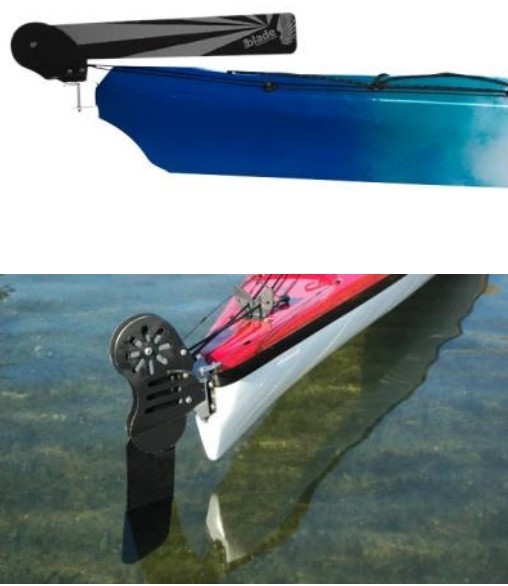
There are two types of foot peg controls, sliding foot pegs move along a track and that moves the rudder via a cable system. These are common on older boats and recreational kayaks. The problem with sliding foot pegs is that you lose the ability to use your legs to drive the kayak forward, and therefore lose efficiency. To keep the rudder in place, you need to maintain equal foot pressure on the pegs. Even if you try to lock the rudder into a centered position, there is still considerable flex in the system. The other problem with the sliding foot peg is the danger of breaking a cable. This is something I have done when paddling a boat with a rudder locked in place and using my normal push on the pegs to propel the boat. Once the cable broke, the foot peg was no longer anchored and provided no support. The rudder was also non-functional since it would only move to one side. Newer kayaks have fixed pegs that pivot or work like a gas pedal. You push the top of the pedal to control the rudder, and the foot peg remains in place to give you support to drive with your legs while paddling. This type of foot peg is more efficient for paddling, but may be more awkward to use, especially with heavy footwear.
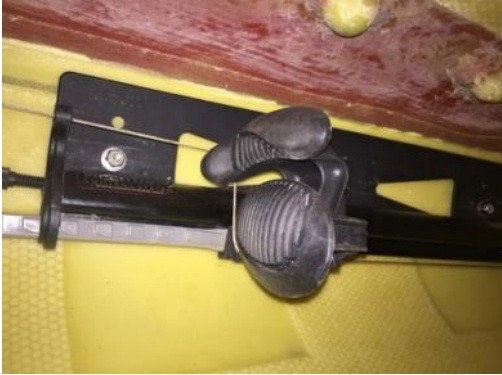
Rudders can be used to both prevent weather cocking and to steer the kayak. This can be helpful particularly when paddling longer distances or in a loaded boat. The rudder is completely external and does not take any space in the hatch.
Specialized, high performance racing boats tend to have fixed rudders that cannot be retracted. These boats are designed to be paddled with a rudder and allow the paddler to maximize the efficiency of the forward stroke while using the rudder to make any course corrections. These rudders are also more effective in controlling the kayak since they are farther forward. Paddlers need to take care when launching or landing to prevent damage to the rudder.
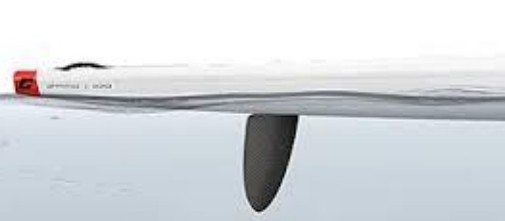
Skegs are retractable blades that drop from a compartment in the back hatch of a kayak along the keel. The blade does not pivot and does not provide assistance in steering. The skeg is generally controlled by either a slider mounted by the cockpit or by a rope. The depth of deployment of the skeg controls how much on an effect it will have. The purpose of the skeg is to help anchor the stern to prevent weather cocking. When paddling downwind or to help turn downwind, the skeg is lowered. When paddling in cross winds the skeg can be adjusted to have the desired effect. If the skeg is too deep, the boat will tend to go down wind. If it isn’t deep enough, the boat will continue to turn into the wind. If you are trying to turn into the wind, it will be much easier if you raise the skeg.
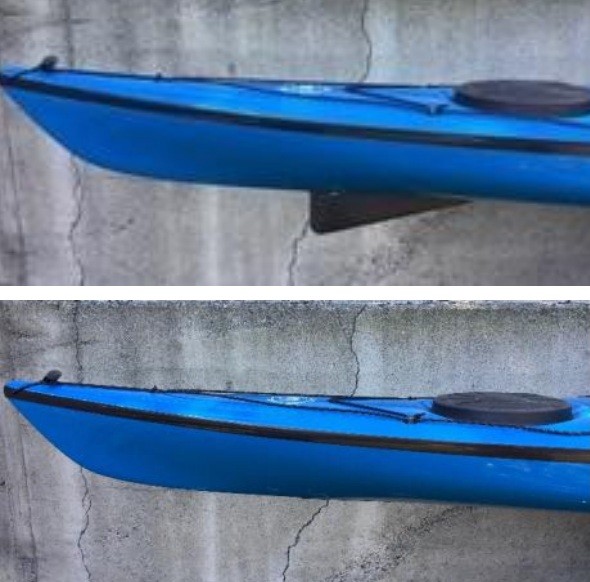
Which is Better? There are many opinions regarding skegs versus rudders, just ask a few paddlers and see the response. There is also a ‘purist’ approach that avoids both skegs and rudders and controlling the kayak using only strokes and edging. While paddlers should learn to control the boat without these steering aids, for example if your skeg or rudder becomes non-functional, it is certainly much nicer to take advantage of these tools on a long paddle day. The choice of skeg or rudder depends on the paddling experience you want to have. Long touring or expedition paddlers may prefer rudders. They take up less space in the hatches and maximize your ability to carry gear. However, if your journeys include rocks and surf, rudders may be damaged in these environments. My one major concern with rudders is that if you do frequent rescue practice or are teaching rescues, the rudder can present a danger to the swimmer. It can also make it harder to climb onto the back deck of a kayak. When doing rescues, I am always aware that the rudder can turn into a weapon. If you like to paddle in rocks or surf and play in rough water, a skeg may be a better choice. You have the advantage of having a skeg during the paddle to and from the play zone, but then the skeg is completely out of the way allowing you to maneuver freely.
So, which is better? It depends. I have chosen boats with a skeg because of the type of paddling I enjoy. There is no best choice. Happy Paddling and stay warm.
Paula Hubbard
CPA Coordinator
